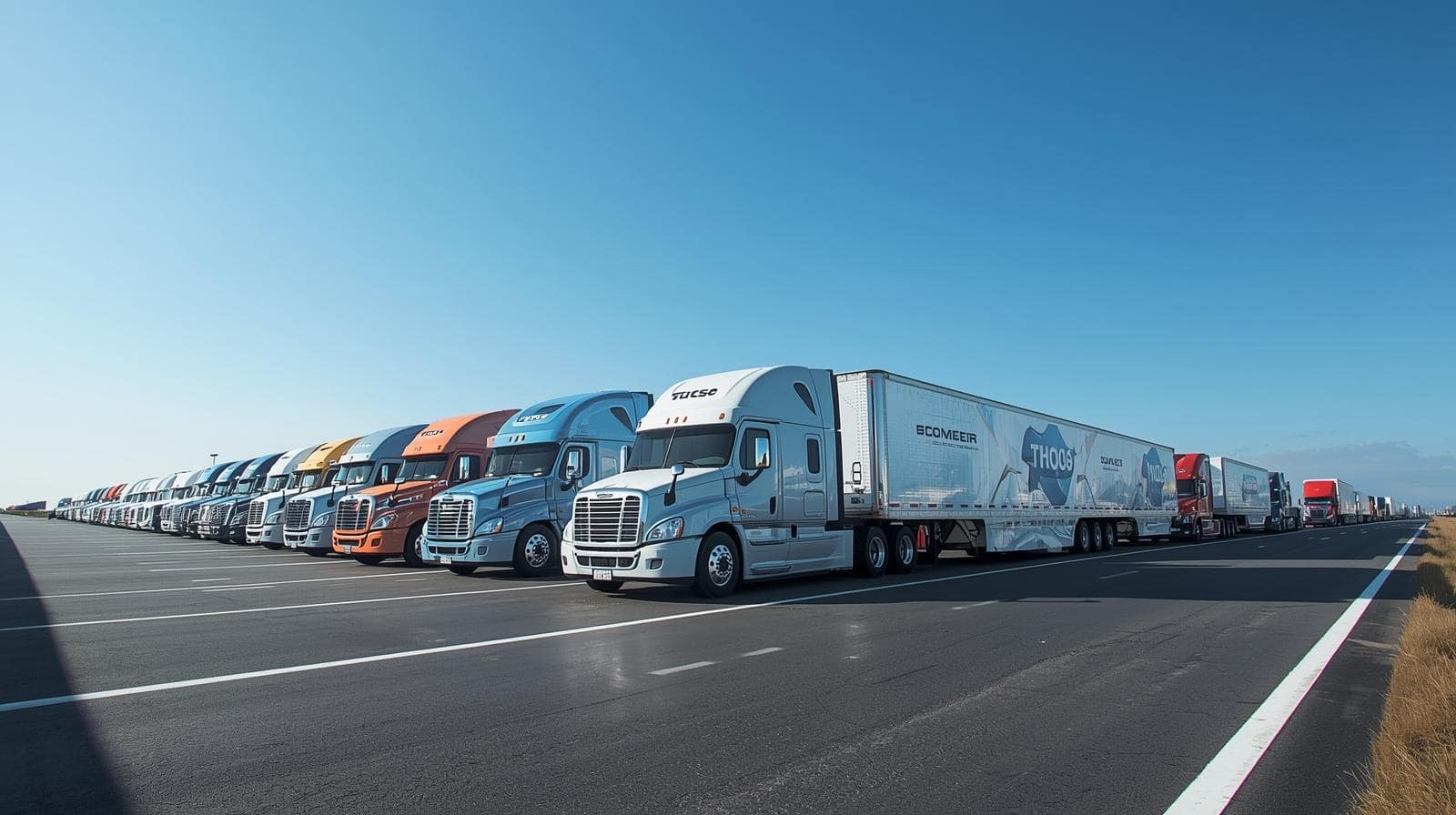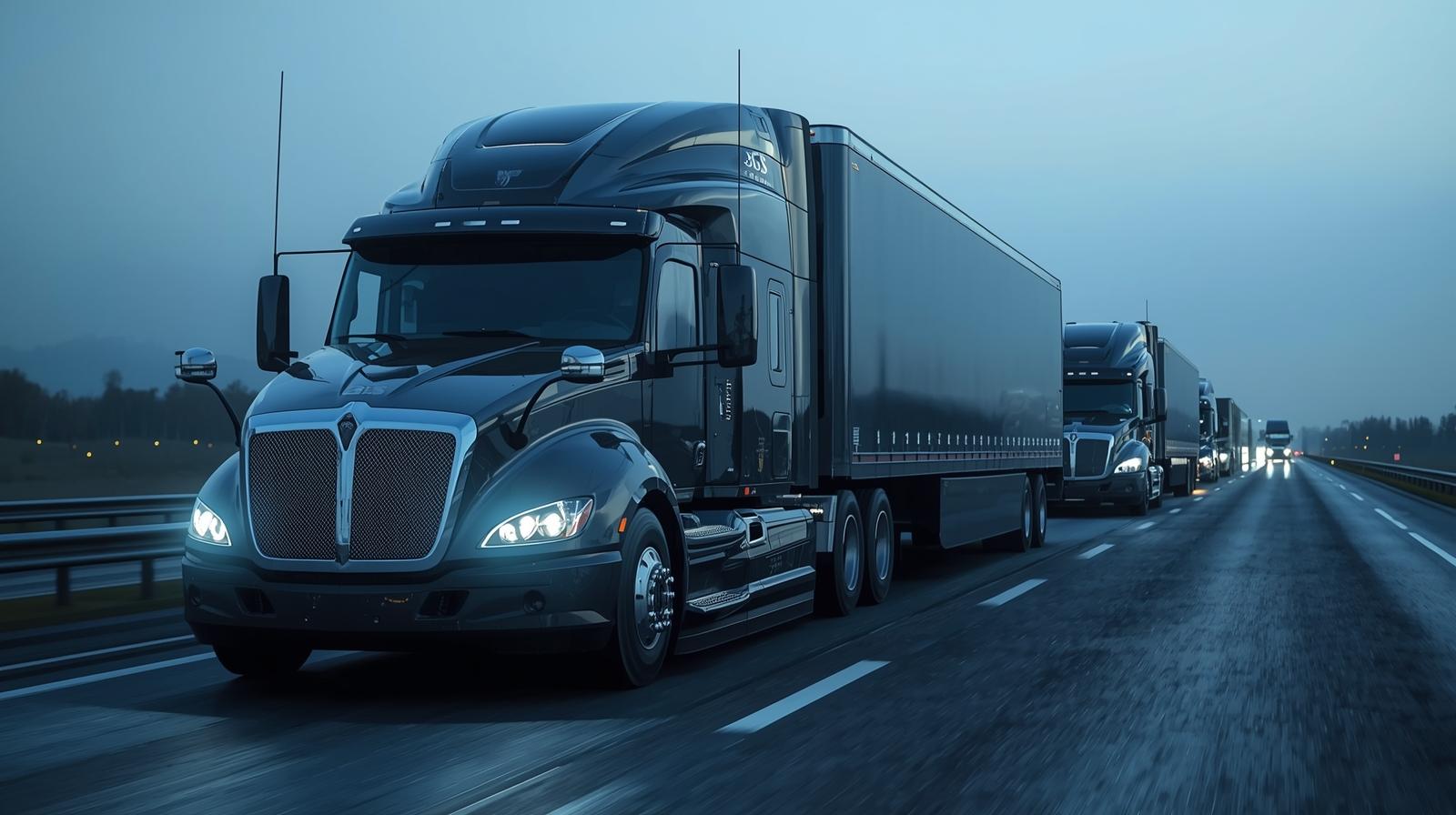Contents
- Why Fleet Management Software Matters
- How to Choose the Right Software
- Top Fleet Management Platforms
- Trends Shaping Fleet Software
- Making Your Decision
- Frequently Asked Questions (FAQ)
- 1. Which fleet management software is best for small B2B fleets?
- 2. What’s the average cost of fleet management software?
- 3. Can fleet software help with sustainability and EV management?
- 4. How do I ensure the software integrates with my current systems?
- 5. Are cloud-based solutions better than on-premise platforms?
- 6. Is training required for my team?
- 7. How do I choose the right vendor?
Fleet management software is now essential for B2B companies – helping reduce costs, boost efficiency, and ensure compliance. This guide explains what to look for in a platform and reviews today’s top-rated solutions.
Why Fleet Management Software Matters
Fleet software enables businesses to track vehicles, manage maintenance schedules, monitor driver performance, and optimize routes. It is widely used in industries such as logistics, construction, manufacturing, and field services.
For instance, one logistics company reported a 15% reduction in operational costs after adopting an advanced fleet management platform.
How to Choose the Right Software
When evaluating solutions, consider the following:
- Ease of Use. A user-friendly interface ensures quick adoption by drivers and managers.
- Features & Scalability. Look for GPS tracking, compliance tools, maintenance alerts, and modular options that scale with your business.
- Integrations. Compatibility with ERP, CRM, and dispatch systems is vital for streamlined operations.
- Support & Reliability. Choose vendors with proven uptime, 24/7 support, and structured onboarding.
- Pricing. Balance subscription costs with long-term ROI to ensure lasting value.
Top Fleet Management Platforms
Samsara
Offers AI-powered analytics, IoT integrations, and predictive maintenance tools. Best suited for large, data-driven fleets.
Verizon Connect
Delivers industry-leading compliance tools, powerful route optimization, and customizable reporting. Ideal for enterprises with strict regulatory requirements.
Geotab
Highly customizable, featuring a robust add-on marketplace and strong EV fleet support. Perfect for mid-size to enterprise-level operations.
Motive (formerly KeepTruckin)
Affordable, intuitive, and compliance-focused. A smart choice for small to mid-size fleets.
Teletrac Navman
Provides advanced analytics, multilingual tools, and global support, making it a strong option for international businesses.
Ezlogz
All-in-one fleet management and ELD platform offering real-time GPS tracking, FMCSA-compliant electronic logs, fuel tax reporting, and driver safety monitoring. Well-suited for small to mid-size carriers seeking compliance and cost efficiency.
Trends Shaping Fleet Software
Modern fleet management platforms:
- Integrate AI for predictive analytics.
- Leverage IoT for real-time, connected fleet operations.
- Support sustainability with EV management and emissions tracking.
- Prepare for the future by exploring integration with autonomous vehicle technologies.
Making Your Decision
Choosing the right fleet management software is not a one-size-fits-all process – it depends heavily on your fleet size, industry, and long-term operational goals. A small logistics company with 20 vehicles will have very different needs from a multinational enterprise managing thousands of trucks across regions. That’s why it’s important to define your priorities before committing to a vendor.
Start by listing your must-have features – such as GPS tracking, compliance reporting, or EV fleet support – and separating them from “nice-to-have” capabilities. This helps ensure that you don’t overpay for tools you won’t actually use.
Next, always request demos or trial periods. A hands-on experience lets you test the user interface, explore integrations, and see how well the platform fits into your existing workflows. Involving drivers, fleet managers, and IT staff during the trial ensures that the system is practical for daily use and doesn’t create unnecessary complexity.
Another key factor is the vendor’s reputation and support structure. Look for providers with a proven track record, high uptime guarantees, and 24/7 customer support. Long-term partnership value should weigh heavily in your decision – a reliable vendor won’t just sell you software but will act as a strategic partner, helping your business adapt to new technologies, regulatory changes, and scaling demands.
Finally, consider the total cost of ownership. Beyond subscription fees, factor in training, onboarding, potential hardware investments, and future scalability. The best choice is the one that balances affordability with robust functionality, ensuring your fleet remains competitive and efficient as your business grows.
Frequently Asked Questions (FAQ)
1. Which fleet management software is best for small B2B fleets?
Motive (formerly KeepTruckin) is often recommended thanks to its affordability, intuitive design, and strong compliance tools. It’s simple to implement and requires minimal training, making it ideal for businesses without dedicated IT teams.
2. What’s the average cost of fleet management software?
Most platforms use a subscription model, typically costing $15–$50 per vehicle per month, depending on features. Advanced solutions such as Samsara or Verizon Connect may cost more but offer enterprise-grade analytics and integrations that justify the higher price.
3. Can fleet software help with sustainability and EV management?
Yes. Platforms like Geotab provide emissions tracking, fuel efficiency monitoring, and electric vehicle (EV) management. These tools help companies meet sustainability targets and transition to greener fleets.
4. How do I ensure the software integrates with my current systems?
Look for platforms with open APIs and pre-built integrations for ERP, CRM, or dispatch systems. Vendors such as Geotab and Samsara excel in offering highly flexible integration options.
5. Are cloud-based solutions better than on-premise platforms?
For most B2B companies, cloud-based solutions are the better choice – offering real-time updates, easy scalability, and remote access. On-premise systems provide more control but usually require higher upfront investment and ongoing IT support.
6. Is training required for my team?
Yes. Even user-friendly platforms benefit from basic training, ensuring drivers and managers can fully utilize features like live tracking, compliance tools, and maintenance scheduling. Most vendors offer onboarding programs and customer support.
7. How do I choose the right vendor?
Consider your fleet size, industry-specific requirements, and growth plans. Request demos, read verified reviews, and evaluate each vendor’s support quality, reliability, and long-term partnership potential.










